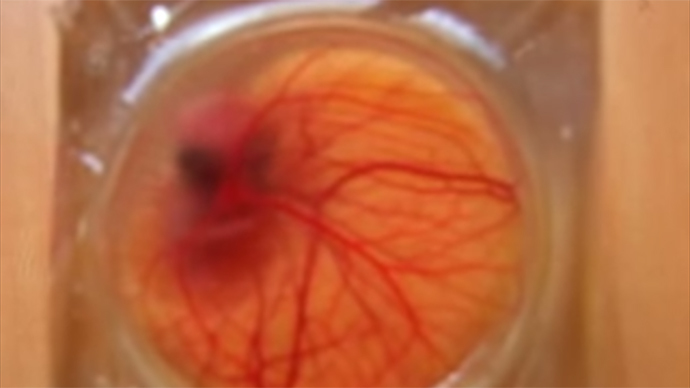Scientists develop transparent eggshell to watch embryo grow (VIDEO)

A biomimicry system of a see-through eggshell that lets scientists explore the way a chicken embryo develops has been produced in China. It is regarded as a major step in the technology of lab-on-a-chip (LOC) schemes.
Two scientists at Tsinghua University in Beijing have presented their advance in creating an embryo lab on a chip. This became possible with the use of PDMS (polydimethylsiloxane) – a “soft” process method that allows the fabrication of a transparent shell, replicating a real bird eggshell. The study was recently published in the journal Science China Technological Sciences.
LOC schemes – 3D microfluidic cell culture chips – in fact, can simulate a variety of organs, such as hearts, or kidneys, or skin, but an embryo is particularly hard to replicate.
READ MORE: Russian startup 3D prints custom splints and plasters
Professor Liu Jing and graduate student Lai Yiyu decided to drop the idea of conventional, chemically based LOC, and replaced it with a biological base. According to the press release, PDMS “is among the best biomaterials for many applications,” and the new system gives the possibility of integration of “multiple techniques.”

“With both high optical transparency and engineering subtlety fully integrated together, the present method not only provides an ideal transparent imaging platform for studying functional embryo development, but also promises a future strategy for ‘lab-on-an-egg’ technology which may be important in a wide variety of either fundamental or practical areas,” the scientists wrote.

The team conducted a series of experiments on leghorn eggs over a two-year period, with transparent “eggshells” able to successfully culture embryos for up to 17.5 days. They therefore offered biologists and clinical researchers a platform for in vivo fluorescent imaging, which is difficult in warm-blooded animals.
READ MORE: Shock therapy: Electric drug treatment can fight cocaine addiction in mice
The authors also mentioned potential future applications of their technology: for instance, “egg-on-chip” labs could be used for early diagnosis of blood or any other body fluid specimens.












